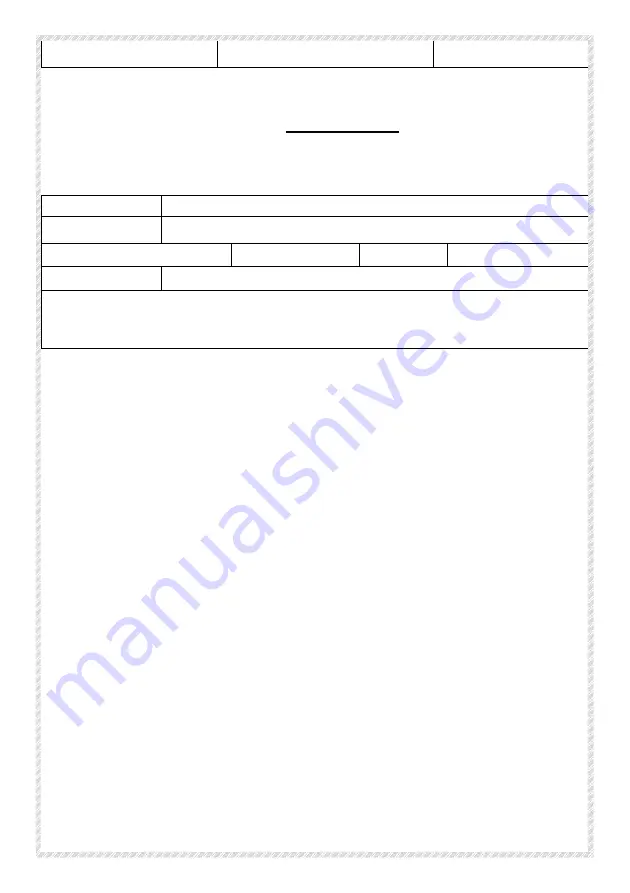
MAN-X5SL-ENG-01
19
ⓒ
2016 All Material Handling
Check List
a) Proper operation and any unusual sounds.
b) Visually inspects hooks for deformation or bending and to verify latches function.
c) Visually inspect Load chain for twist, damage or excessive wear between links.
d) Visually inspect the Hoist body and lever for damage.
e) Fasteners are in place and tight.
f)
Tail chain stop is in place.
g) Nameplate and Warnings and operation instruction label are legible.
h) Visual inspection to determine that the unit is not compromised by corrosion or
debris and can operate as intended.
i)
Make a trial lift or pull of a few inches and then stop to determine the hoist operates
as intended.
j)
Continual observation during use for any damage or change in operation.
k) Disassemble lever end of hoist to expose the brake components. Inspect brake
pawls, disc, springs and ratchet surfaces for contamination or abnormal wear.
l)
Inspect; chain, springs and load bearing parts per INSPECTON MEASUREMENTS
as illustrated in the Operation and Maintenance Manual.
m) Disassemble hook blocks and check hooks 100% for any sign of cracks, bending,
twist or stretching and opening measurement per INSPECTON MEASUREMENTS
as illustrated in the Operation and Maintenance Manual.
n) Check chain wheel or wheels for smooth operation and visually for wear.
o) Check chain guide and guards for damage.
p) Load test to minimum 125% of WLL (not more than 150% WLL). During
which confirm function is as intended. After the test load is released inspect
again for requirements of a) through j).
Model:
Serial No.:
Date:
PERIODIC INSPECTION
in compliance with ASME B30 & OSHA
Required annually as a minimum and must be recorded. Periodic Inspection may be
required more often as determined by severity of service or as experience dictates. Consult
ASME B30.21 for determination of service and instruction. Periodic inspection is also
required for repaired units. This inspection requires disassembly and load test prior to
being returned to service.
Owners Name:
Description :
Working Load Limit (WLL):
Test Load:
Evaluated by:
Comments:






















